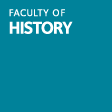In the first half of the seventeenth-century, philosophers and mathematicians were still trying to solve important questions on hydrostatics, like the existence of vacuum, the cohesion of matter, and pressure. Mathematicians like Simon Stevin and Galileo Galilei made contributions to these problems that became standard in the field. But Jesuit mathematicians in Portugal also provided solutions, albeit different ones. For instance, the Italian Jesuit Giovanni Paolo Lembo (1570–1618) explored the existence of vacuum and the Flemish Hendrick Uwens (1618–1667) mentioned the moment of speed in fluids to explain the hydrostatic paradox in the classes that they taught in Lisbon. This paper explores these answers to illustrate specific features of the Jesuit teaching of mathematics in early modern Lisbon. As the teaching of mathematics in seventeenth-century Portugal was centred in this school, this research is a much-needed survey of the teaching of hydrostatics in the country at that time.
history of science
,science



